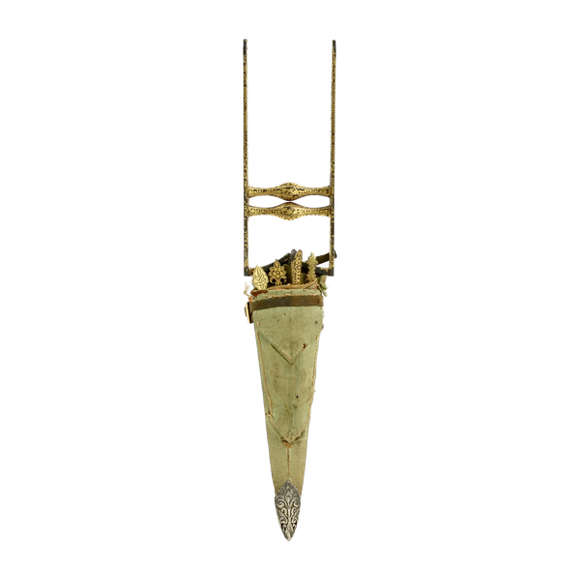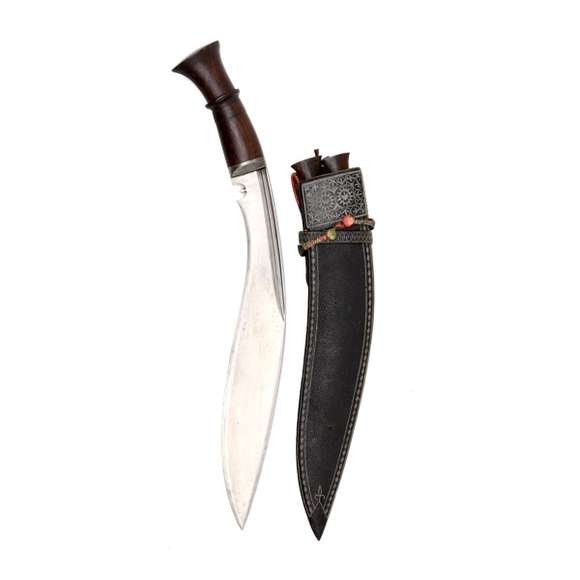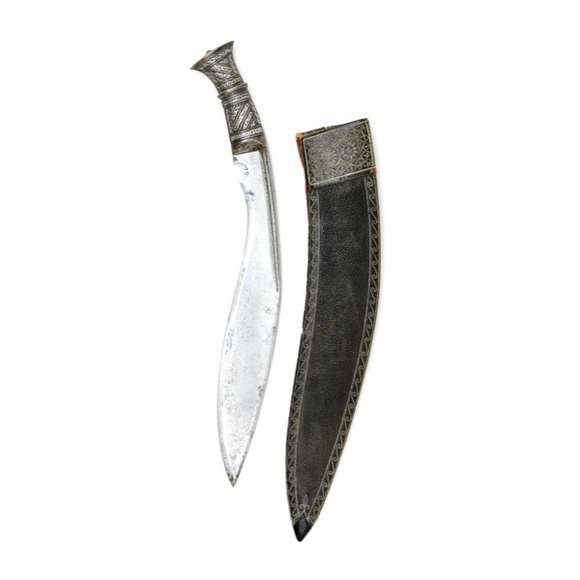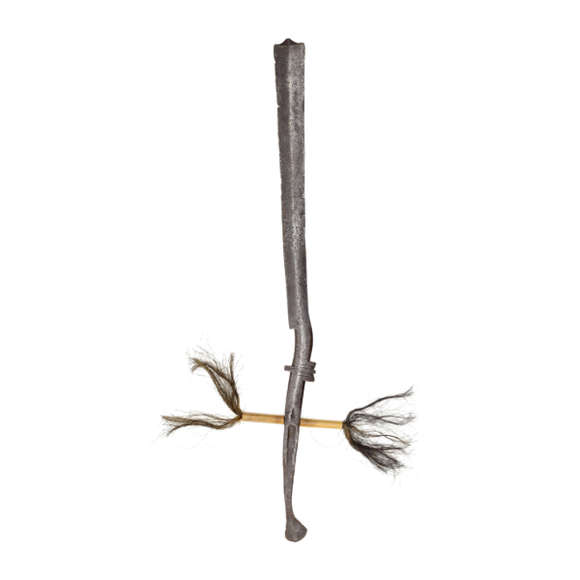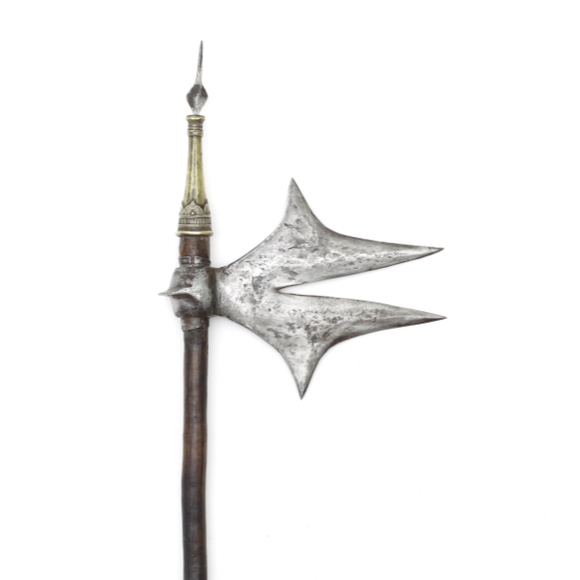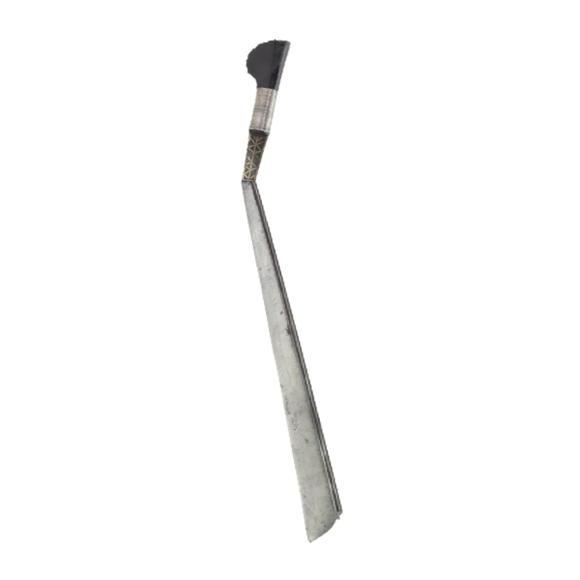With a fine wootz blade with a pronounced center ridge.

31.1 cm
21 cm
Base 3.5 mm
Middle 3 mm
Base 27 mm
Middle 25 mm
165 grams
1 cm from hilt
Iron, wootz steel, silver, gold
North India, probably Rajasthan
19th century
Description
"It is most common to use only gold or gold leaf for the prominent portions of a work, the sides and back parts being often done in silver, but both metals are frequently employed together with good effect, the silver threading in and out amongst the gold. Such a combination is styled Ganga - Jamni, from its supposed resemblance to the mingling of the dark waters of the Jamna with the muddy stream of the Ganges at the Triveni, or their point of union with the mystic Sarasvati below the fort at Allahabad. Although the Punjab is so prominent for damascening, the most artistic work is done in Rajputana, or wherever the Rajput lives."
-Thomas Holbein Hendley
Damascening on steel or iron as practiced in India.
W. Griggs & Sons, Ltd. London
1892
This North Indian dagger is made entirely of steel, with a steel hilt and Indian wootz blade. The blade is out of polish, but the effects of the edge heat treatment can clearly be seen, and the surface hints at a relatively fine-grained wootz.
The all-steel hilt is covered with silver and gold overlay, most of it being in silver with floral highlights in gold. There is something forged into the hilt that rattles.
North India, probably Rajasthan, 19th century.
No scabbard.








An understated, elegant khukuri of substantial proportions with fine layered blade.
With iron, silver overlaid hilt. Its associated scabbard features fine quillwork.
This peculiar sword was used by the Garo people of Assam for fighting, clearing the jungle, and animal…

